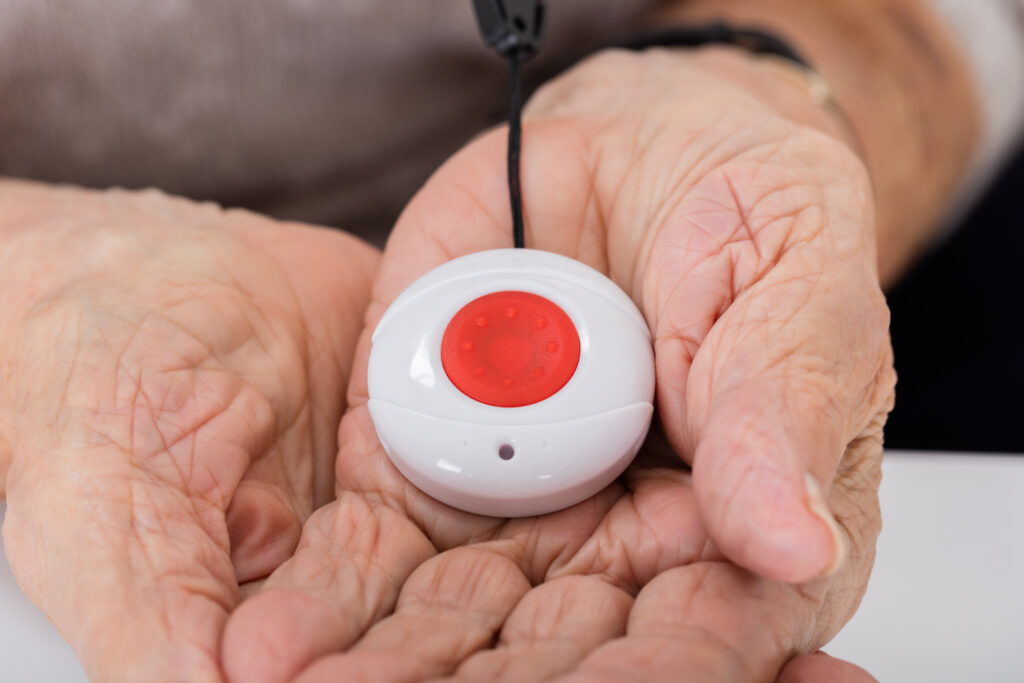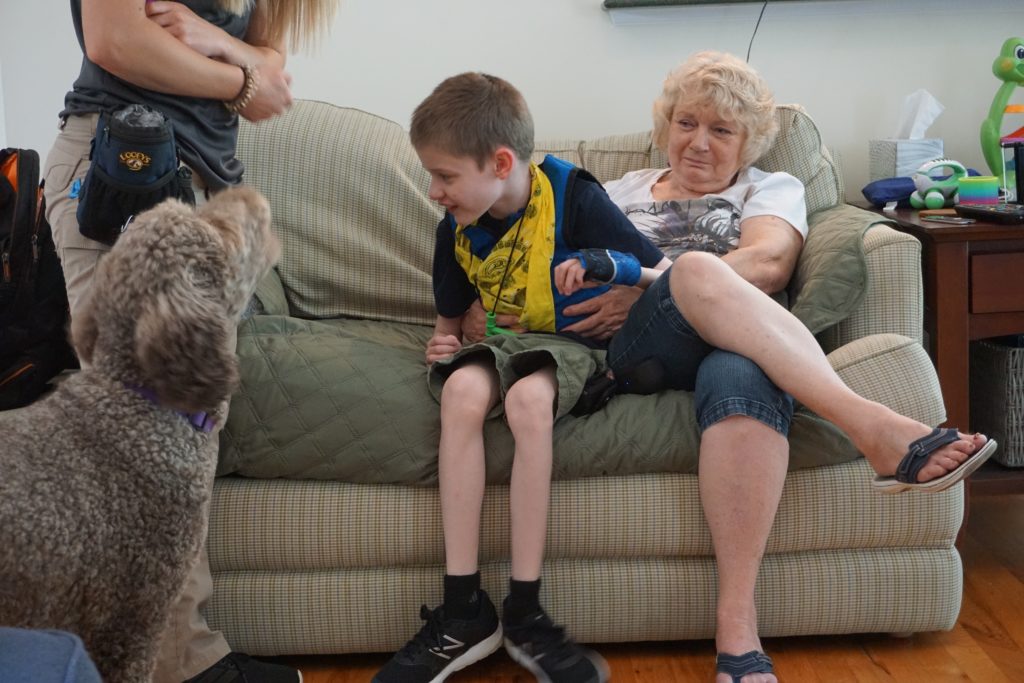Seizure Service Dogs
Providing vital support and assistance

It’s no secret that dogs are able to help to us in so many different ways. With their superior senses and attention to detail, seizure service dogs capable of alerting and responding to their owner’s seizures have increased in popularity.
When a seizure strikes, it can often be scary, intimidating, and create a very unsafe situation for an individual.
Having a dog trained to take action during a seizure can make a world of difference. A trustworthy companion capable of offering their aid during a seizure enables owners to have more independence, feel more secure, and be more prepared when a seizure occurs.
The Benefits of a Seizure Service Dog
There are numerous benefits of owning a seizure service dog.
These dogs are faithful companions that assist anyone who suffers with seizures. They can be trained to alert at the onset of a seizure, or to respond when a seizure is taking place.
Some advantages of having a Seizure Service Dog include:
Improved Independence
A seizure service dog helps to increase the independence of anyone who suffers from seizures. With either a seizure alert or seizure response dog, the individual is able to partake in more activities, safe in the knowledge that their service dog will be able to help them.
Improved Sleep
It may be stressful for other family members to sleep in a different room from the individual who suffers with seizures. A fully-trained seizure alert dog can bark during the middle of the night to notify others that a seizure is taking place, improving the response time to provide assistance in such an event.
Expanded Social Life
Seizure service dogs can increase an individual's self-confidence. This results in greater confidence in social settings, such as at school, work or amongst friends.
Decreased Levels Of Anxiety
The peace of mind a seizure alert or seizure response dog can bring is almost immeasurable. They not only reduce anxiety for the individual who experiences the seizures, but they can also bring comfort and reassurance to the whole family.
Seizure Alert or Seizure Response?
At Highland Canine Service Dogs, we train both Seizure Alert and Seizure Response Service Dogs. We are frequently asked what the difference is between them.
Here is a brief explainer on the difference between these two types of service dogs.
There are a few differences between a Seizure Alert Dog and a Seizure Response Dog. The functions of each of these types of service dog is slightly different, which results in a tailored training process.
A Seizure Response Dog is trained to behave a certain way when a seizure occurs. This is usually a task such as pressing a medical alert button, retrieving a phone, or barking for help.
By contrast, a Seizure Alert Dog is trained to behave a certain way before the seizure ever happens, providing early warning to their handler that a seizure is imminent. With many types of seizures, time is of the essence to limit the amount of damage the body suffers, and with enough advance notice, some seizures can even be prevented by the administration of appropriate medications.
Ever versatile, a service dog tested for the correct temperament and drive can actually be trained to both indicate before a seizure occurs, as well as sound the alert when one is in progress. This means it is theoretically possible for the dog to be trained in both seizure alert and seizure response skills, depending upon what the owner needs. Naturally, this is a more intensive training process and typically requires more time with the trainer, as this requires the dog to be trained with two very distinct (and potentially life-saving) skills.
Both types of service dogs are amazing examples of the abilities of our canine companions. However, it is important to understand that seizure alert is not a task all dogs can learn. Due to the precarious situations of seizures, it is a possibility the service dog may never pick up on the seizures ahead of time. Though seizure alert training is complex and can be difficult, it is still possible and extremely helpful to those who require this type of assistance.
Seizure Alert Service Dogs
Service dogs trained to alert to the oncoming seizures of their owners are amazing, lifesaving companions.
The lives of individuals with seizure disorders are often altered and disrupted due to their condition. It can make living independently or traveling alone difficult or even impossible.
The addition of a seizure alert service dog who can sense and make its owner aware of an impending seizure can bring entirely new possibilities and confidence to their activities and daily life.
How can a dog alerting to a seizure benefit its owner?
When a dog who is capable of such an alert or warning enters the life of someone struggling with a seizure disorder, it is possible for them to take a pro-active approach to manage their seizures.
For example, the individual could take preventative medications before the seizure begins, get into a safe position, or make a loved one aware of the oncoming seizure. Thus, the seizure alert service dog has aided their owner in avoiding a bad fall or possibly even stopping the seizure with medication before it could begin.
After or during the event of a seizure, the service dog can continue to provide support through seizure assistance tasks. Tasks such as these include retrieving a medical bag, rolling the individual over and clearing their airway during asphyxiation, providing stabilization after the seizure, pushing a medical alert button, and more.


Training a dog for seizure alerts
It is important to understand that dogs may not be able to be trained to alert to all types of seizures. In order to train a seizure alert dog to alert to a seizure, there must be unique visual, physical, or audible cues that can be imitated during training. Grand Mal, myoclonic, clonic, and tonic seizures, as well as other less common types are among those with symptoms which are most easily mimicked. Atonic and absence seizures most often do not result in physical or audible body reactions; their latency gives us a much lower success rate.
The training process includes exposing the seizure alert dog to the symptoms of the seizure and shaping his or her behavior to a final indication, whether it be a bark alert, paw alert, or other preferred method of signaling. The mimicked symptoms become the cue for the dog to perform his or her desired behavior, and the dog is rewarded each time he or she successfully executes the behavior. This training session is then practiced in a large variety of environments and amongst many distractions so the dog’s behavior is solid and responds in any situation.
Seizure Response Service Dogs
Seizure Response Service Dogs are trained companions capable of many tasks intended to assist in the event of a seizure.
Oftentimes, seizures can result in confusion, unsteadiness, slurred speech, and a variety of other effects.
A dog trained to perform specific tasks to aid their owner during or after a seizure can be an immeasurable comfort and offer much-needed assistance.
What are the benefits of a seizure response dog?
Each individual has unique needs and requires different types of aid depending on their situation, lifestyle, and goals. Service dogs trained to offer assistance when a seizure happens often allow their owners to feel more independent.
With a dog at their side that will bark for help or clear their airway when needed, many people feel more confident to live alone or do errands alone, attend more events, or take trips they were nervous of in the past.
If the individual is a child, many parents feel more secure in allowing their child to play in the yard or their room without them being present. Additionally, many children or even adults get the confidence to sleep in their room with the dog, because the dog can bark to alert to the rest of the household if the person has a seizure at night.

Tasks & Training
There are multiple tasks that a Seizure Alert or Seizure Response Dog can be trained to perform to help their handler.
Below are a few examples of the types of tasks we train a seizure service dog to perform.

Barking to alert family members or other members of the household
With a bark alert, a seizure service dog can be trained to notify family members or other members of the household of the onset of a seizure. This is invaluable during a situation where the child may be in a different room, or the rest of the family may be sleeping at night.

Retrieving a medicine bag
Medication can help to alleviate or mitigate the symptoms of seizures.The seizure service dog can be trained to retrieve a medicine bag in specific situations as required.

Pressing a medical alert button
Some seizure service dogs are trained to press a medical alert button, which rings an alarm that notifies other members of the household.

Stimulation during seizures
A seizure response dog can use their body to lay on the individual in the midst of an epileptic episode, which can prevent them rolling off the bed or causing themselves injury.
Learn More About Service Dogs
The service dog community has become vast and diverse in recent years. Now more than ever, families looking into seizure service dogs are able to easily find an array of information at their fingertips. However, many have found that a lot of this information is confusing or even conflicting.
So where do you start? For information on service dogs, we suggest becoming familiar with the definition, guidelines, and rules available for review by the Americans with Disabilities Act. This information is straight from the source and a great option for educating yourself on the subject of service dogs.

Contact us today!
Interested in adding a Seizure Service Dog to your family? Have questions about the process? Contact us today and a member of our specialist team will reach out to you!
There are a number of ways to get in touch. Whether it’s telephone, email, social media or our contact form below, we’d love to hear how we can help you.
- 704.500.8281
- info@autismassistancedog.com
- Check us out on Facebook